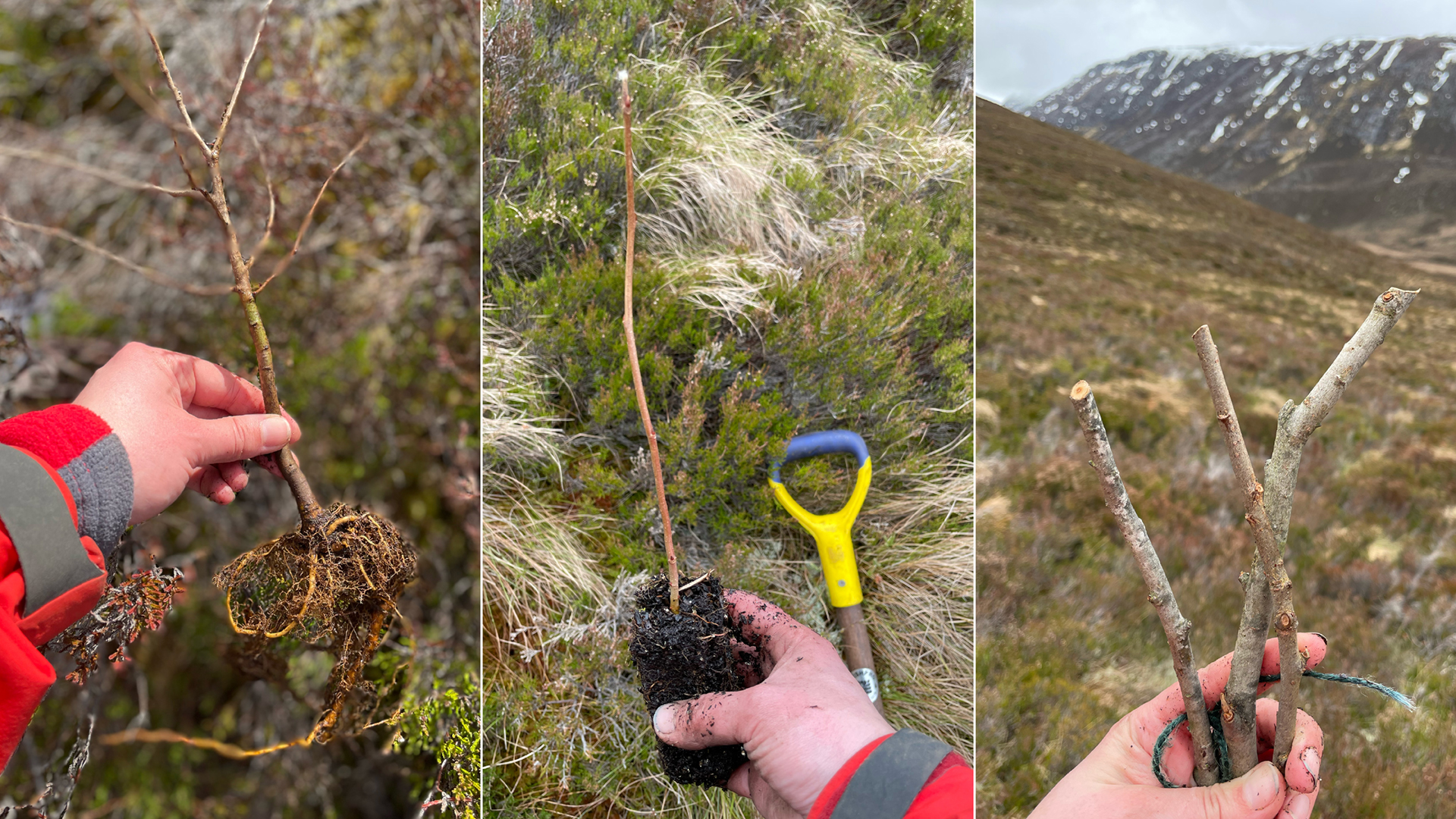

Spring is in the air and trees are being planted in the ground. Tree Nursery Assistant Lynn Cassells tells us about the spring tree planting by the dedicated team of staff and volunteers at RSPB Abernethy Reserve.
As Spring arrives in the Cairngorms, it’s time for our team to get out and plant some of the trees that have been cared for in our nursery.
Over the last couple of months we have been preparing, cutting, and planting. Recently, we ventured out with a group of volunteers and staff to plant a mixture of Downy Birch (Betula pubescens), Aspen (Populus tremula) and Eared Willow (Salix aurita). This work is being done to help expand native woodland by creating pockets of trees that can start to naturally spread further over time.
 Birch, Alder, and Eared Willow ready for planting in Strath Nethy.
Birch, Alder, and Eared Willow ready for planting in Strath Nethy.
Where did these trees come from?
Well, the Birch have been grown on from seed that we collected a few years back from within the Cairngorms Connect partnership area and the Aspen have come from a seed stand of Strathspey-origin trees. The Birch we planted are ‘bare root’ trees. These are trees that have been grown in our nursery beds. When they are big enough to plant (usually around 20cms above ground height) we dig them up carefully, trying to avoid any root damage as much as possible. Once the trees have been lifted, we need to make sure that they are planted quickly to avoid the roots drying out.
The Aspen were a mix of bare root and ‘cell grown’. Cell grown is when the seed is grown in trays, and then the seedlings pricked out into an individual pot of compost. In this case, the roots are encased in a ‘plug’ of compost which keeps them moist and better protected.
Collecting Eared Willow cuttings from Abernethy Reserve.
The Eared Willow were from branches we cut from trees growing on the Abernethy Reserve. These were then processed into 20cm sticks that are simply pushed into the soil, which should then root and grow.
Our planting locations are carefully planned and approved by Scottish Forestry (previously Forestry Commission Scotland). Because of the number of trees we have to plant, we need help to get them all in the ground. So a few weeks back a team of 5 staff and 7 volunteers headed up into Strathy Nethy, a long and very squelchy glen that leads to the saddle between the Munros of Cairngorm Mountain on one side and Bynack Mor on the other.
Making our way up the glen carrying spades and the trees in special saddle bags.
Strath Nethy can be renowned for poor weather but on our big planting day, the sun shone and winds were light – the perfect day for us to plant around 1,000 trees – an incredible effort all round! The rest of our trees have been planted by contractors at agreed locations. It’s great to finally see the trees that the volunteers and staff have worked so hard to grow, going into the ground.
Staff and volunteers planting trees on a sunny day in Strath Nethy.
Interested in volunteering at the Tree Nursery? Find out more here.
Conservationists in Scotland have kicked off a unique four-month ‘Easter egg hunt’ involving one of the UK’s rarest and most beautiful moths.
Five years of raptor data has been published by WildLand Cairngorms in a new report showing the positive impact of ecological restoration work.